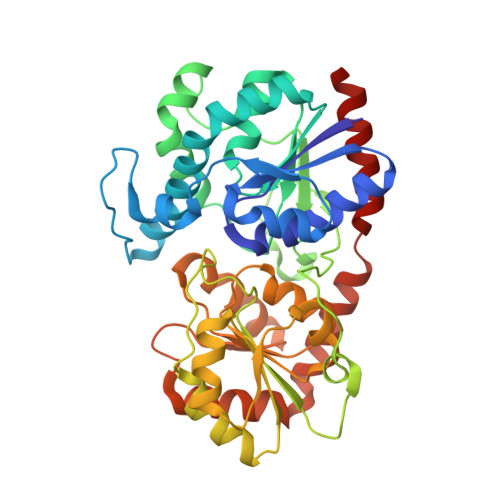Structure and action of the C-C bond-forming glycosyltransferase UrdGT2 involved in the biosynthesis of the antibiotic urdamycin.
Mittler, M., Bechthold, A., Schulz, G.E.(2007) J Mol Biology 372: 67-76
- PubMed: 17640665
- DOI: https://doi.org/10.1016/j.jmb.2007.06.005
- Primary Citation of Related Structures:
2P6P - PubMed Abstract:
The glycosyltransferase UrdGT2 from Streptomyces fradiae catalyzes the formation of a glycosidic C-C bond between a polyketide aglycone and D-olivose. The enyzme was expressed in Escherichia coli, purified and crystallized. Its structure was established by X-ray diffraction at 1.9 A resolution. It is the first structure of a C-glycosyltransferase. UrdGT2 belongs to the structural family GT-B of the glycosyltransferases and is likely to form a C(2)-symmetric dimer in solution. The binding structures of donor and acceptor substrates in five structurally homologous enzymes provided a clear and consistent guide for the substrate-binding structure in UrdGT2. The modeled substrate locations suggest the deeply buried Asp137 as the activator for C-C bond formation and explain the reaction. The putative model can be used to design mutations that change the substrate specificity. Such mutants are of great interest in overcoming the increasing danger of antibiotic resistance.
- Institut für Organische Chemie und Biochemie, Albert-Ludwigs-Universität, Albertstr. 21, D-79104 Freiburg im Breisgau, Germany.
Organizational Affiliation:

















